Trees similar to olive trees have been used for various purposes throughout history. From their wood, leaves, fruit, and oil, they have significant cultural and economic importance in various regions worldwide.
Keep reading to explore some of the most common trees similar to olive trees and their characteristics, uses, and benefits. You might also enjoy reading: Best Olive Trees that You Can Grow Indoors with Ease.
1- Bay Laurel Trees
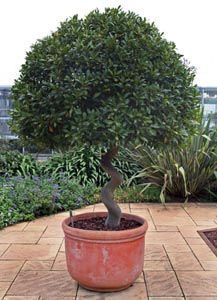
Like olive trees, Bay trees (Laurus nobilis) are native to the Mediterranean region and are small to medium-sized evergreen trees that can grow up to 20 meters tall.
Bay trees are often cultivated for their aromatic leaves, which are commonly used in cooking, perfumes, and medicines. The tree’s wood is also used in the making of decorative objects such as spoons and bowls.
Bay trees are known for protecting against natural disasters and were used in the laurel wreaths worn by soldiers, ancient poets, athletes, and Roman Emperors to symbolize accomplishment or victory (Source: University of Wisconsin-Madison Division of Extension)
The table below contains Bay Trees characteristics
| Botanical Name | Laurus |
| Common names | – Bay Laurel – Bay Leaf Tree – True Laurel – Bay Tree – Grecian Laurel – Sweet Bay – Laurel – Laurel Tree – Tree Laurel – Sweet Bag |
| Family | Lauraceae |
| Maintenance Requirements | – Medium |
| Plant type | – Edible – Tree – Herb – Shrub – Houseplant |
| Mature size | – Height: 8 to 12 feet (2.4 to 3.7 meters) – Width: 8 to 30 feet (2.4 to 9.1 meters) |
| Sunlight Requirement | – Full sun with at least 6 hours of direct sunlight daily – Partial Shade with about 2 to 6 hours of direct sunlight |
| Soil Drainage | – Good Drainage – Occasionally wet or dry |
| Best soil type | – Clay – Sand – High Organic Matter – Loam (Silt) |
| Region Of Origin | Mediterranean |
| USDA Plant Hardiness Zone | 8 to 10 |
2- Wild Olive Trees (Olea europaea var. sylvestris)
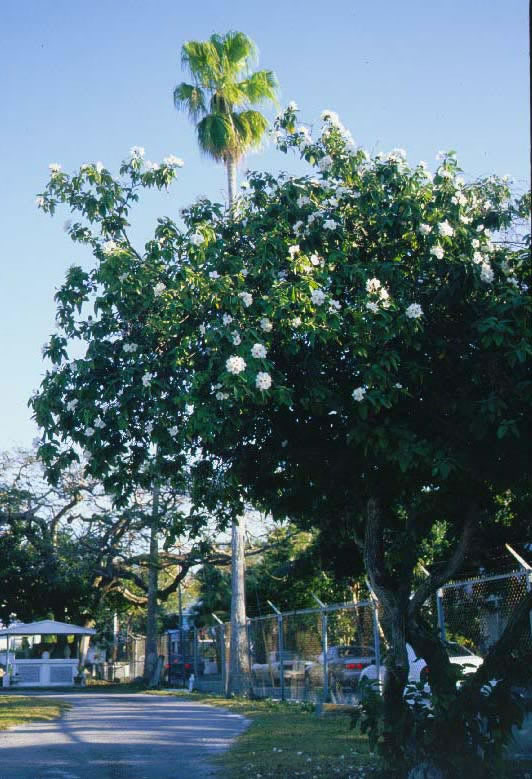
Wild olive (Olea europaea var. sylvestris) is an evergreen tree native to the Mediterranean basin, considered an ancestor of cultivated olive trees (Source: Ensembl Plants)
Moreover, wild olive trees share many physical characteristics with cultivated olive trees, such as their small size, twisted trunk, and silvery-green leaves.
Nevertheless, wild olive trees are not propagated commercially since they produce small and bitter fruits. Wild olive trees are mainly used for land conservation through their dense root systems that help prevent erosion.
The table below contains Wild Olive Trees characteristics:
| Botanical Name | Olea europaea var. sylvestris |
| Common names | – Acebuche (Source: ScienceDirect) – wild olive tree |
| Family | Oleaceae |
| Maintenance Requirements | Low |
| Plant type | – Shrub – Small tree |
| Mature size | 10 to 15 feet (3 to 4.6 meters) tall |
| Sunlight Requirement | – Full sun or partial shade |
| Soil Drainage | – Well-drained soils – Moist |
| Best soil type | – Clay – Sand – Loam (Silt) |
| Region Of Origin | Mediterranean |
| USDA Plant Hardiness Zone | 4 to 9 |
3- Mastic Trees (Pistacia lentiscus)
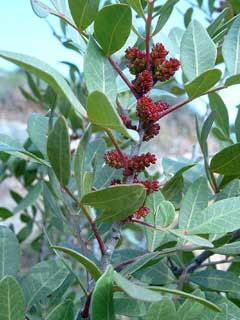
Mastic trees (Pistacia lentiscus) are native to the Mediterranean region and grow up to 20 feet (6.1 meters) tall.
Like olive trees, mastic trees have small, dark-green leaves; however, they produce small red berries instead of fruits.
Mastic tree resin has various uses, including chewing gum production and perfume ingredients. Additionally, the wood is used in the manufacturing of furniture and decorative objects worldwide.
The table below contains mastic trees characteristics:
| Botanical Name | Pistacia lentiscus |
| Common names | mastic tree |
| Family | Anacardiaceae |
| Maintenance Requirements | Medium |
| Plant type | Broadleaf Evergreen |
| Mature size | – Height: 16 to 20 feet (4.9 to 6.1 meters) – Width: 20 to 50 feet (6.1 to 15 meters) |
| Sunlight Requirement | – Full sun |
| Soil Drainage | Well Draining |
| Best soil type | – Dry – Sandy |
| Region Of Origin | Mediterranean |
| USDA Plant Hardiness Zone | 9 to 11 |
4- Autumn Olive (Elaeagnus umbellata)
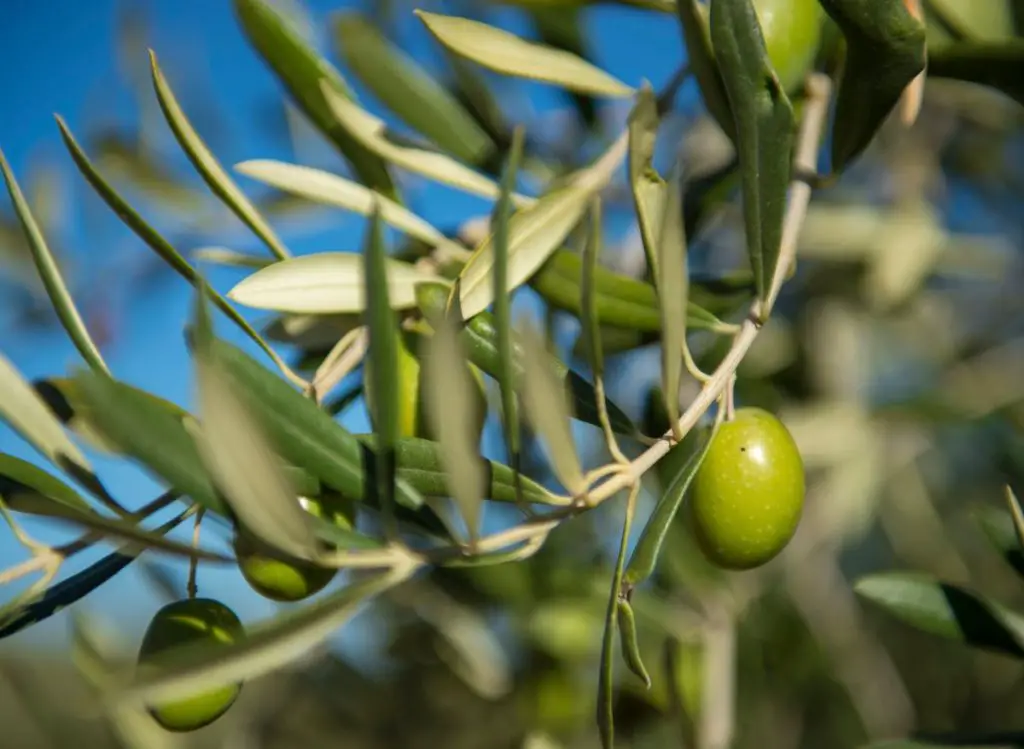
Autumn olive, also known as Japanese silverberry, is a shrub that is native to East Asia but has become widespread in other parts of the world, including North America. The shrub has attractive silver leaves, delicate yellow flowers, and bright red fruits that ripen in the fall.
When it comes to landscaping and gardening, autumn olive has several benefits. The shrub is hardy and easy to grow, making it an excellent choice for hedgerows, windbreaks, and erosion control. The roots of the shrub can also fix nitrogen in the soil, which can help improve soil health and fertility.
Because of its fast growth and dense foliage, autumn olive also provides excellent wildlife habitat, providing shelter and food for birds and other animals.
However, Autumn olive can be problematic because it outcompetes native plants by shading them out and changing the soil’s chemistry around them, a process called allelopathy (Source: The Nature Conservancy)
The table below contains Autumn Olive characteristics:
| Botanical Name | Elaeagnus |
| Common names | – Autumn berry – Russian Olive – Autumn Elaeagnus – Autumn Olive – Spreading Oleaster – Japanese Silverberry |
| Family | Elaeagnaceae |
| Maintenance Requirements | Autumn olive has a high maintenance requirement |
| Plant type | – Tree – Shrub |
| Mature size | – Height: 10 to 16 feet (3 to 4.9 meters) – Width: 20 to 30 feet (6.1 to 9.1 meters) |
| Sunlight Requirement | – Full sun: about over 6 hours of direct sunlight per day – Partial Shade: between 2 and 6 of direct sunlight per day |
| Soil Drainage | – Well-draining soil – Moist soil |
| Best soil type | – Clay – Sand – Loam (Silt) |
| Region Of Origin | – Afghanistan – Eastern Asia |
| USDA Plant Hardiness Zone | 4 to 9 |
6- Carob Trees (Ceratonia siliqua)
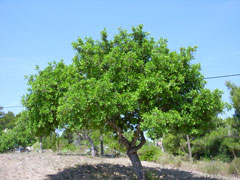
Carob trees (Ceratonia siliqua) are evergreen trees that can grow up to 15 meters tall and are native to the Eastern Mediterranean and Middle Eastern regions (Source: United States Department of Agriculture)
Carob trees’ wood is used in the making of decorative objects or fuel, while their pulp is used in food products such as desserts or drinks.
Carob tree leaves are often used in traditional medicine and the cosmetic industry due to their antibacterial properties.
The Table Below Contains Ceratonia siliqua’s Characteristics
| Botanical Name | Ceratonia siliqua |
| Common names | – Algaroba – Beans – Sugar Pod – Carob – Saint John’s Bread – Carob Tree Kharoub – Locust Pods |
| Family | Fabaceae |
| Maintenance Requirements | Medium |
| Plant type | – Edible – Tree – Shrub |
| Mature size | 26 to 49 feet (8 to 15 m) tall |
| Sunlight Requirement | – Full sun at least 6 hours of direct sunlight a day |
| Soil Drainage | – Good Drainage – Moist – Some flooding and occasionally Wet |
| Best soil type | – Loam (Silt) – Shallow Rocky – Sand |
| Region Of Origin | – North Africa – Southern Europe |
| USDA Plant Hardiness Zone | 8 to 11 |
7- Myrtle Trees (Myrtus communis)
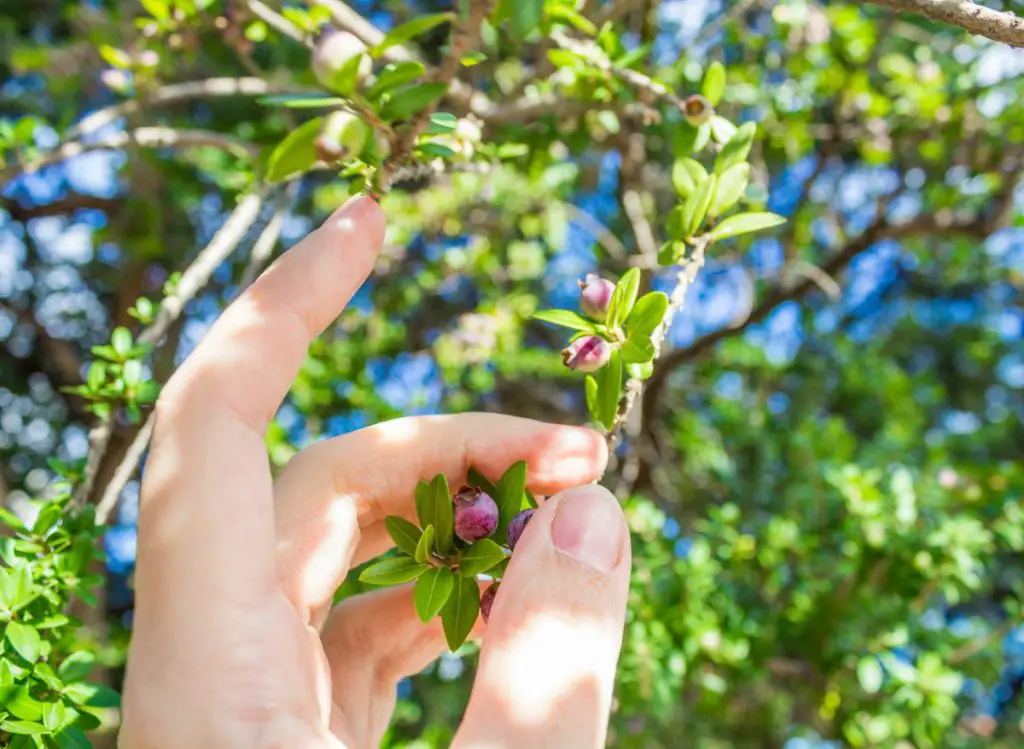
Myrtle trees (Myrtus communis) belong to the same family as olives and are native to the Mediterranean, Western Asia, and Northern Africa.
Myrtle trees can grow up to 12 feet (3.7 meters) tall and have evergreen, aromatic leaves and white flowers, which are used in perfumes and as a decorative material. Moreover, myrtle tree wood is used to make small objects like combs, keychains, and kitchen utensils.
The Table contains Myrtus communis Characteristics
| Botanical Name | Myrtus communis |
| Common names | – Common Myrtle – True Roman Myrtle – Foxtail Myrtle – Myrtle Bonsai Tree – Myrtle – True Myrtle – Sweet Myrtle |
| Family | Myrtaceae |
| Maintenance Requirements | – Low |
| Plant type | – Tree – Shrub |
| Mature size | – Height: 8 to 12 feet (2.4 to 3.7 meters) – Width: 8 to 12 feet (2.4 to 3.7 meters) |
| Sunlight Requirement | – Full sun with a minimum of 6 hours of direct sunlight per day – Partial Shade: 2-6 hours of direct sunlight only part of the day |
| Soil Drainage | – Adequate Drainage – Moist |
| Best soil type | – Loam (Silt) – Clay – Sand |
| Region Of Origin | – Southwestern Asia – Northern Africa – Southern Europe |
| USDA Plant Hardiness Zone | 8 to 9 |
8- Argan Trees (Argania spinosa)
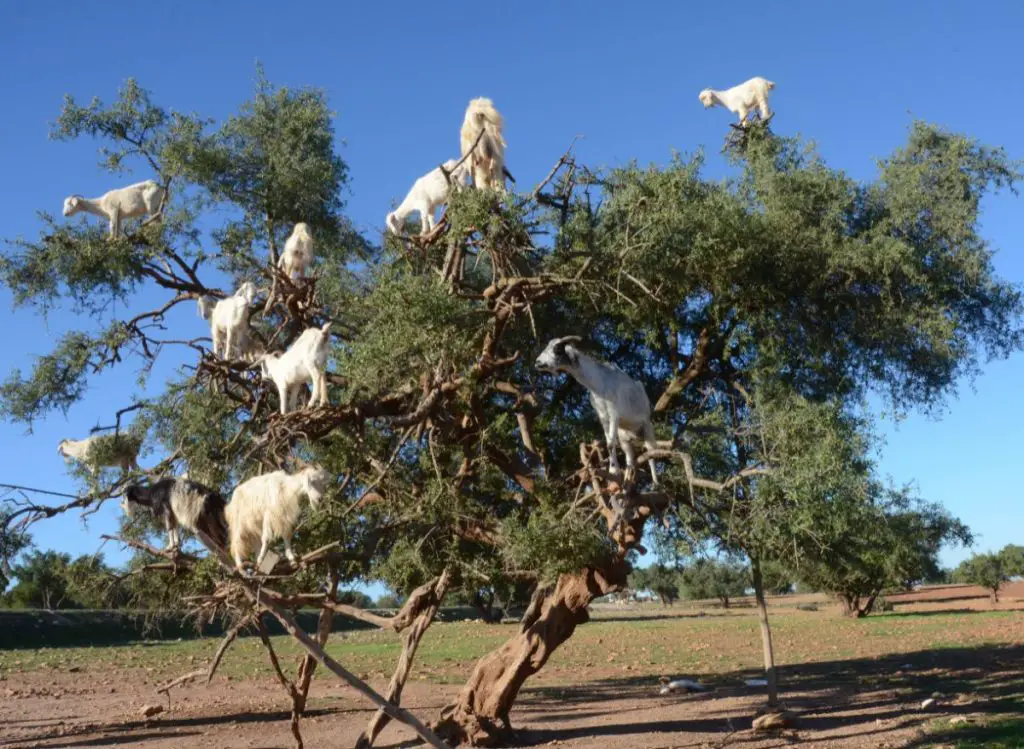
The argan tree, also known as the tree of life, is found in Morocco, and it produces argan oil. Argan oil has become increasingly popular in recent years due to its many uses.
This oil is rich in vitamin E and is filled with antioxidants, essential fatty acids, and anti-inflammatory properties. Argan oil is great for use in skin and hair care products, as well as for cooking. Some have even used it to treat wounds and alleviate arthritis pain.
Like olive trees, argan trees cannot withstand a harshly cold climate, but they are resistant to extreme heat and drought, which makes it easy for the plant to grow and flourish in regions of southeast Morocco (Source: University of Arizona)
The table below contains argan trees‘ characteristics
| Botanical Name | Argania spinosa |
| Common names | – Argan tree – Argan – Moroccan Ironwood tree |
| Family | Sapotaceae |
| Maintenance Requirements | Argania spinosa requires very little care |
| Plant type | Broadleaf evergreen |
| Mature size | – Height: 15 to 25 feet (4.6 to 7.6 meters) – Spread: 25 to 40 feet (7.6 to 12.2 meters) |
| Sunlight Requirement | Full sun |
| Soil Drainage | – Dry to medium moisture – Well-drained – Sandy soil |
| Best soil type | Sandy soil |
| Region Of Origin | Southwest Morocco |
| USDA Plant Hardiness Zone | 9 to 11 |
9- Neem trees (Azadirachta indica)
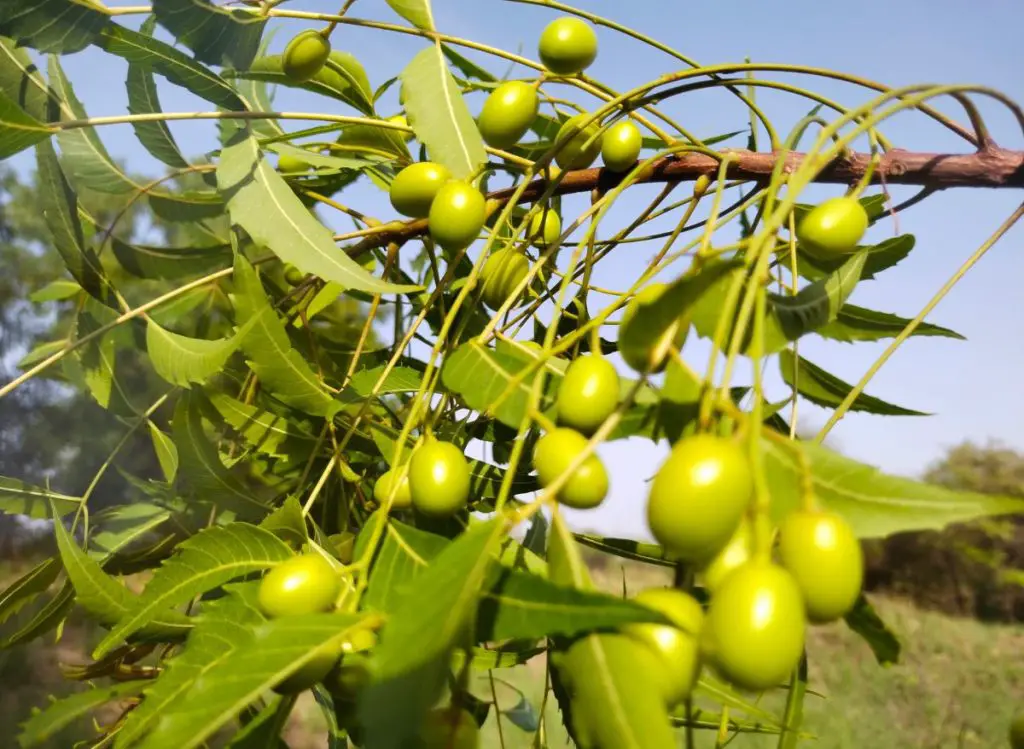
The neem tree is native to India and has been used in Ayurvedic medicine for over 4,000 years. The leaves, bark, oil, and seeds of the tree are all used for medicinal purposes.
Neem oil is particularly useful as a natural insecticide in agriculture and can also be used to treat symptoms of eczema, psoriasis, and acne.
The table below contains Azadirachta Indica characteristics
| Botanical Name | Azadirachta indica |
| Common names | – Neem tree – Margosa tree |
| Family | Meliaceae |
| Maintenance Requirements | Medium |
| Plant type | Broadleaf evergreen |
| Mature size | – Height: 50 to 75 feet (15.2 to 22.9 meters) – Spread: 50 to 75 feet (15.2 to 22.9 meters) |
| Sunlight Requirement | – Full sun to part shade |
| Soil Drainage | – Dry to medium – Well-drained soils |
| Best soil type | – Sandy |
| Region Of Origin | – Bangladesh – India – Nepal – Pakistan – And Sri Lanka |
| USDA Plant Hardiness Zone | 10 to 12 |
10- Almond Trees (Prunus dulcis)
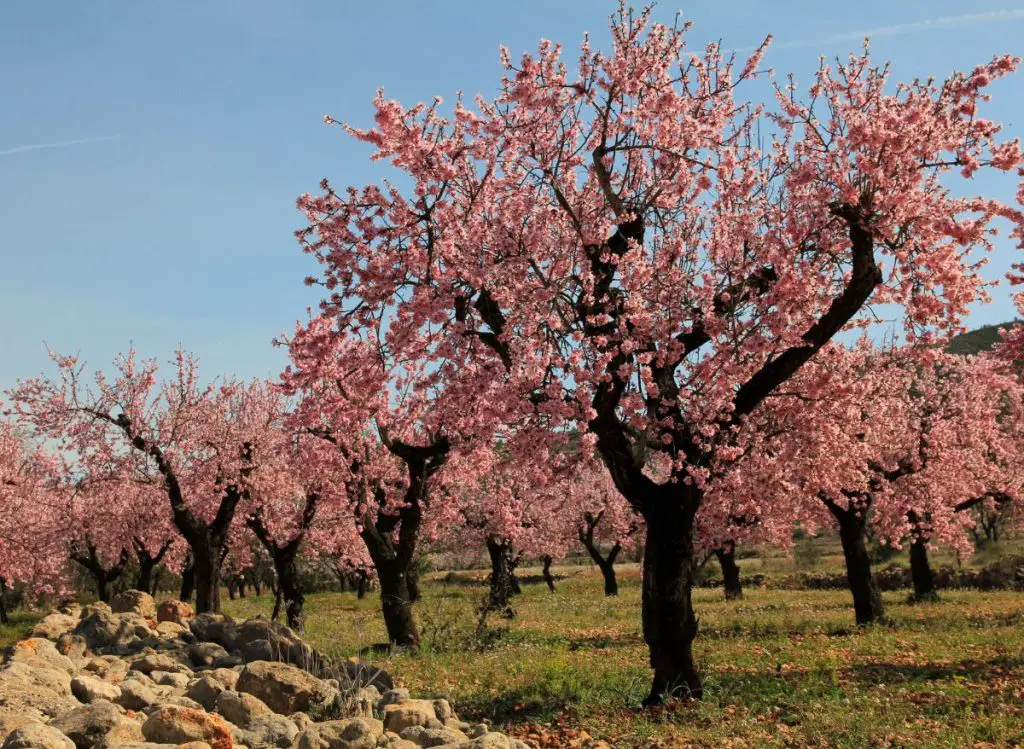
The almond tree is native to Northern Africa and Syria and produces a nutrient-dense fruit that, when processed, produces almond oil.
This oil is high in monounsaturated fats and vitamin E, making it ideal for cooking and skincare products. Almond oil is also thought to improve heart health, regulate blood sugar levels, and improve brain function.
The table below contains Prunus dulcis characteristics.
| Botanical Name | Prunus dulcis |
| Common names | – Almond tree |
| Family | Rosaceae |
| Maintenance Requirements | Medium |
| Plant type | Tree |
| Mature size | – Height: 10 to 55 feet (3 to 16.8 meters) tall) – Spread: 10 to 55 feet (3 to 16.8 meters) tall) |
| Sunlight Requirement | – Full sun |
| Soil Drainage | Well-drained |
| fertile, well-drained loams in full sun | – Fertile – Loams |
| Region Of Origin | – Northern Africa – Syria |
| USDA Plant Hardiness Zone | 7 to 9 |
11- Tamanu tree (Calophyllum inophyllum)
Tamanu tree is found in East Africa and tropical Asia and produces a fruit that contains tamanu oil, which is rich in fatty acids and has been used for centuries to treat a variety of skin conditions, such as eczema, acne, and psoriasis. It is also thought to have pain-reducing and anti-inflammatory properties.
Calophyllum inophyllum is generally planted as windbreaks or as a roadside tree to provide shade (Source: Center for International Forestry Research (CIFOR))
The table below contains Calophyllum inophyllum characteristics.
| Botanical Name | Calophyllum inophyllum |
| Common names | – Nyamplung – Beauty Leaf – Tamanu tree |
| Family | Clusiaceae |
| Maintenance Requirements | Moderate |
| Plant type | Tree |
| Mature size | Height: 35 to 50 feet (10.7 to 15.2 meters) Spread: 30 to 50 feet (9.14 to 15.24 meters) |
| Sunlight Requirement | – Full sun – Partial sun or partial shade |
| Soil Drainage | – Well-drained |
| Best soil type | – Clay soil – Sandy soil – Loamy soil – And degraded soils. |
| Region Of Origin | – East Africa – Tropical Asia – And Wallacea |
| USDA Plant Hardiness Zone | 10 to 11 |
What to read next:
- Are Fruitless Olive Tree Roots Invasive? (Here’s what I found out!)
- Do Olive Tree Roots Cause Damage? (Let’s find out!)
- Growing And Caring For Black Olive Tree: Everything you must know!
Wrapping Up
Despite their physical similarities, trees similar to olive trees have unique characteristics, uses, and cultural importance.
From cooking to medicinal purposes, these trees provide a variety of benefits that deserve recognition. In addition, these trees have significant economic value through their wood, leaves, and other products.
I believe that knowing their features helps broaden our understanding of the Mediterranean biome’s biodiversity and the cultural practices of various regions worldwide.

